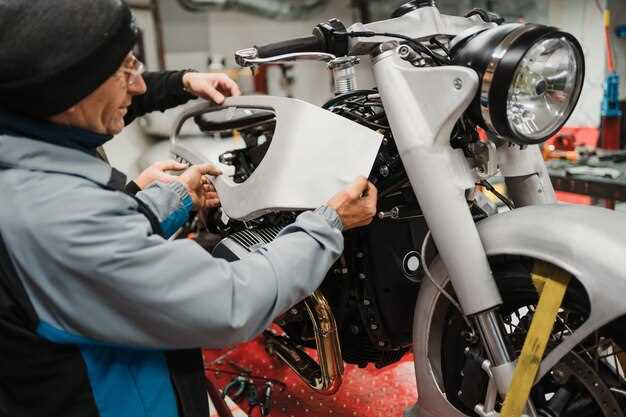

Purchasing a used motorcycle can be an exciting yet daunting experience. To ensure you make a wise investment, a thorough inspection is essential. The right checklist will guide you through various aspects of the motorcycle, helping you identify any potential issues before finalizing the deal.
During the inspection, pay close attention to both the essential components and the overall condition of the motorcycle. Understanding what to look for can save you from unexpected repair costs down the road. This comprehensive evaluation will not only enhance your buying confidence but also ensure that you choose a motorcycle that suits your needs and budget.
Whether you’re a seasoned rider or a first-time buyer, knowing how to conduct an effective inspection is crucial. From assessing the mechanical parts to checking for cosmetic damage, a systematic approach will provide you with valuable insights into the motorcycle’s history and performance capabilities. In the following sections, we will outline the key areas to focus on during your inspection to help you make an informed decision.
Check the Motorcycle’s Exterior for Signs of Wear and Damage

When inspecting a used motorcycle, it is crucial to thoroughly examine its exterior for any signs of wear and damage. This initial assessment can reveal a lot about the bike’s overall condition and the care it has received from previous owners. A comprehensive visual inspection can help you make an informed decision before buying.
Start by looking for scratches, dents, and rust on the bodywork. Small scratches may be minor cosmetic issues, but larger dents can indicate serious accidents or falls. Rust is a red flag, as it can signify long-term neglect and affect the structural integrity of the motorcycle.
Next, check the paint for fading or discoloration. Paint that is uneven or peeling may suggest a poor-quality repaint job, which can hide underlying damage. Additionally, pay attention to the condition of the chrome parts; any signs of pitting or corrosion should not be overlooked, as they can lead to further deterioration.
Examine the windshield and lights. Cracks or chips in the windshield can impede visibility and safety. Ensure all lights are functional, as non-working lights can indicate electrical issues or lack of maintenance.
Inspect the tires for tread wear and cracks. Uneven wear may suggest alignment issues or improper maintenance. A motorcycle with tires in poor condition could lead to unsafe riding experiences.
Finally, take a close look at the suspension components, including fork seals and shock absorbers. Signs of oil leakage or excessive wear can signal potential problems that may require costly repairs.
By meticulously checking the exterior of the motorcycle, you enhance your chances of making a wise purchasing decision. A careful inspection can save you from future headaches and expenses, ensuring that your new ride is both reliable and enjoyable.
Evaluate the Engine and Mechanical Components Thoroughly

When buying a used motorcycle, one of the most critical steps is to perform a thorough inspection of the engine and mechanical components. A comprehensive checklist can help ensure that you don’t overlook essential elements that might affect the bike’s performance and longevity.
Start by inspecting the engine for any signs of leaks or corrosion. Look for oil spots or coolant leaks around gaskets and seals. A clean engine is typically a good indicator of proper maintenance. Next, check the oil level and condition; it should be at the correct level and have a transparent appearance without any metal shavings.
Listen to the engine while it’s running. Unusual sounds such as knocking or excessive rattling can indicate internal issues. Pay attention to how the engine idles; it should run smoothly without stalling. Also, test the throttle response; it should be quick and without hesitation.
Evaluate the exhaust system for any signs of rust or damage. A loud exhaust can be a sign of internal damage or modifications that may not comply with local regulations. Ensure that the bike’s emissions control systems are intact and functioning.
Examine the braking system closely. Check the brake pads for wear and the condition of the rotors. Inspect the brake lines for any signs of cracks or leaks, as safety depends heavily on a properly functioning braking system.
Don’t forget to look at the suspension components. Check for any signs of leakage from the fork seals and ensure that the suspension moves smoothly without any binding. If possible, bounce the bike to assess the shock absorbers’ effectiveness.
Lastly, check the tires for adequate tread depth and even wear. Uneven wear can indicate alignment issues or problems with the suspension. Ensure that the chain and sprockets are in good condition and properly lubricated. A worn chain or sprocket can affect the bike’s performance and safety.
By following this checklist and conducting a thorough inspection of the engine and mechanical components, you’ll gain confidence in your potential purchase and avoid costly surprises down the road.
Review the Bike’s Documentation and Maintenance History
When considering buying a used motorcycle, reviewing its documentation and maintenance history is crucial for making an informed decision. First, request the bike’s title to ensure it is clear and free of any liens. This document will confirm ownership and protect you from potential legal issues.
Next, ask for the maintenance records. A well-maintained motorcycle will often have a detailed service history that includes receipts for work done. Check for regular oil changes, tire replacements, and any repairs or upgrades that have been performed. This checklist can reveal how the previous owner treated the motorcycle and whether any major issues were addressed.
Look for documentation of any warranties that may still be active. Some motorcycles come with manufacturer warranties that can transfer to new owners, offering peace of mind and potential cost savings for repairs or replacements. If the warranty is applicable, ensure you understand what it covers.
Additionally, if the bike has undergone any modifications, ensure these are documented. Some modifications can affect the motorcycle’s performance and safety. Confirm that any adjustments made align with the manufacturer’s recommendations and have been carried out properly.
Lastly, consider obtaining a vehicle history report. This can provide valuable insights into past accidents, title transfers, and other significant events in the motorcycle’s history. By thoroughly reviewing all documentation, you can feel more confident in your purchase and avoid potential pitfalls associated with buying a used motorcycle.
